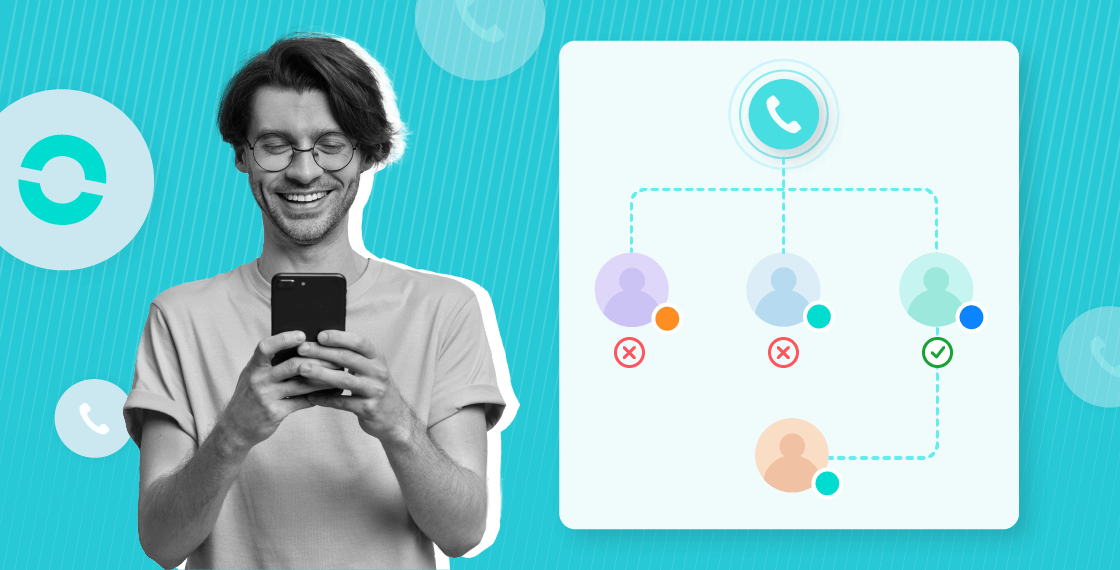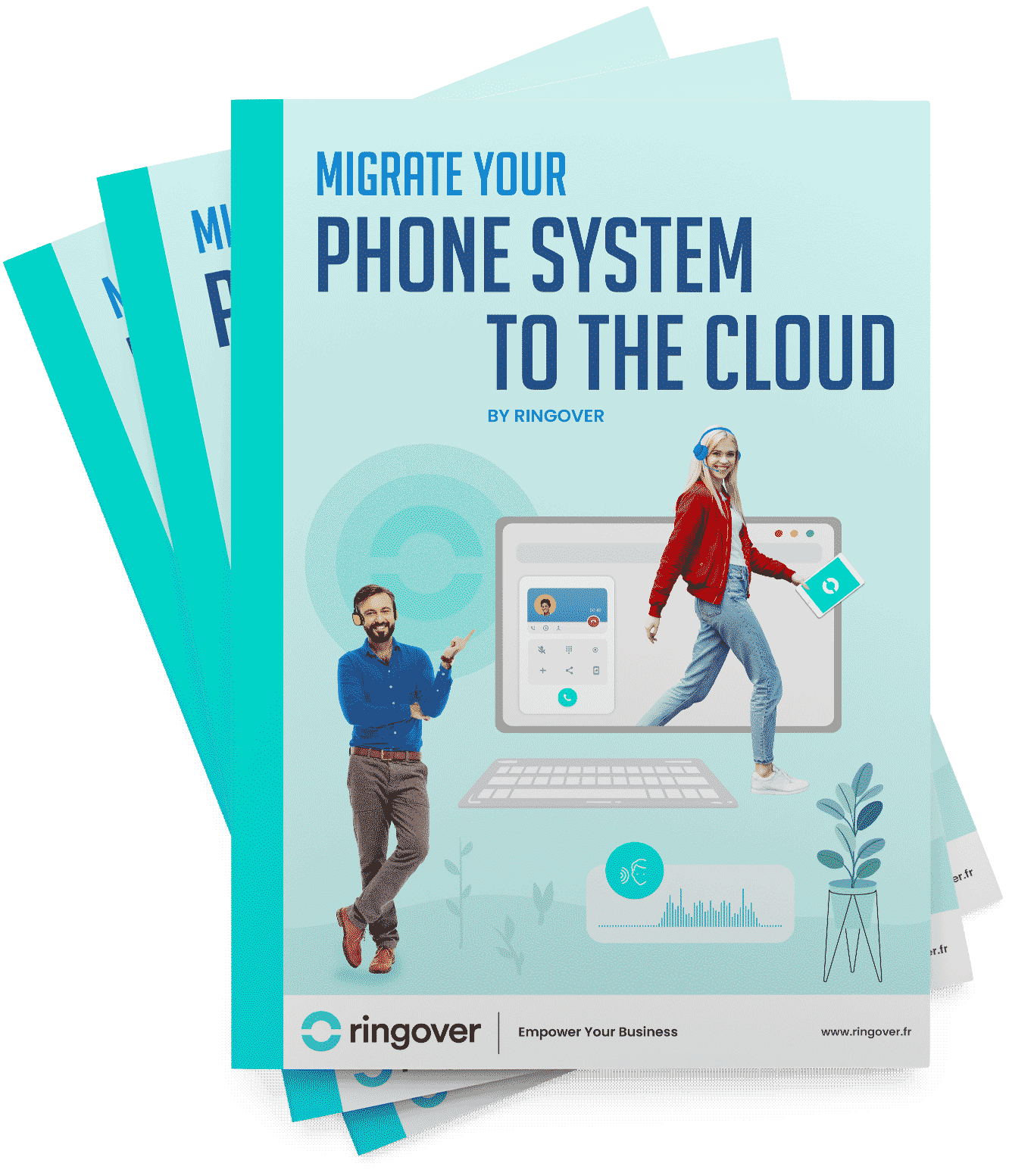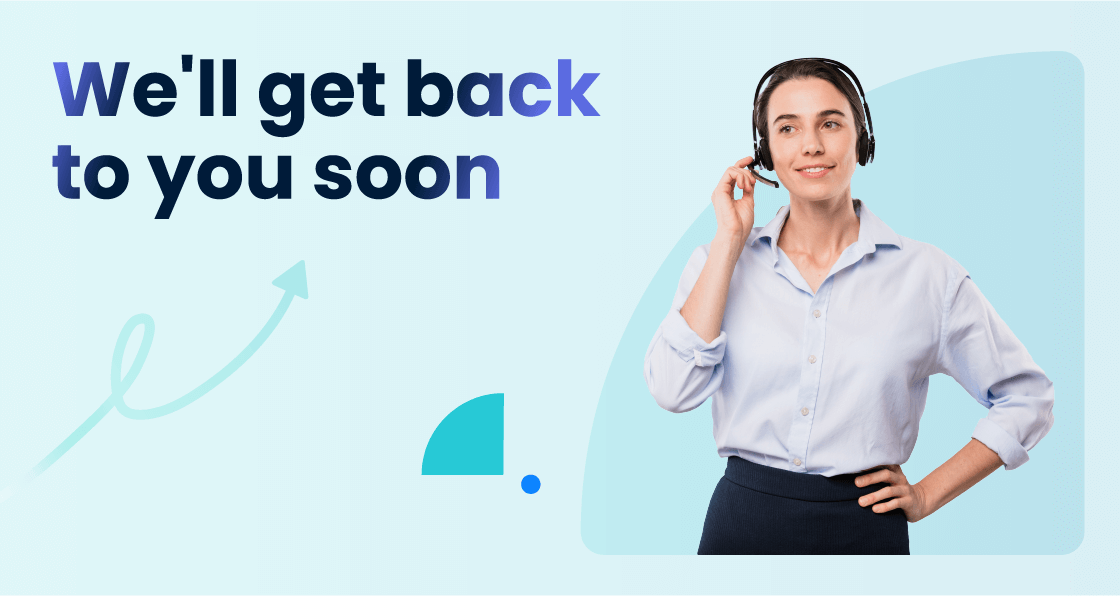Summary
- What is a Parallel Dialer?
- Key Features of Parallel Dialers
- Advantages of Parallel Dialers
- What is a predictive dialer?
- How does a predictive dialer work?
- What's the difference between a parallel dialer and a predictive dialer?
- How much is the cost of auto dialer software?
- What is the top predictive dialer software?
- What is the difference between progressive and predictive dialers?
- Are predictive dialers illegal?
- Empower your business with a data-driven parallel dialer that promotes sales
When it comes to optimizing your outbound sales campaigns, you have to look at predictive dialer vs. parallel dialer. Both types of dialers are designed to enhance the efficiency of your sales teams, but they operate in distinctly different ways, each with its own set of advantages and disadvantages.
If you're navigating the complex world of outbound dialing, understanding the differences between these two technologies is essential to selecting the best tool for your specific needs. Whether you're managing a large call center or leading a smaller sales team, the right dialer software can significantly impact your call volume, agent productivity, and ultimately, your sales performance.
In this article, we'll delve into the details of parallel dialers and predictive dialers, helping you make an informed decision that aligns with your sales goals and workflow.
What is a Parallel Dialer?
A parallel dialer is a sophisticated dialing technology designed to significantly enhance the efficiency and productivity of sales teams, particularly in outbound call center software. Here's a detailed look at what a parallel dialer is and how it functions.
How Parallel Dialers Work
Parallel dialers work by initiating multiple outbound calls simultaneously for each sales agent. This approach is akin to casting multiple lines when fishing, where instead of waiting for a single line to catch a bite, you increase your chances by having several lines in the water at once. When a prospect answers one of these calls, the system instantly connects them to the available agent while automatically terminating the other ongoing call attempts.
Key Features of Parallel Dialers
Multi-Line Dialing
Parallel dialers can dial between three to 10 numbers simultaneously, depending on the software and the specific setup. This allows sales reps to reach a higher volume of prospects in a much shorter timeframe.
Automatic Call Management
The system screens out busy signals, voicemails, and disconnected numbers, ensuring only live calls are routed to the agents. This feature saves valuable time and reduces the frustration associated with manual dialing.
Integration with CRM Systems
Advanced parallel dialers integrate seamlessly with CRM systems, providing real-time access to prospect information and automatically logging call results. This integration enhances the personalization of calls and streamlines post-call activities.
Post-Call Automation
After each call, the parallel dialer automatically takes care of after-call tasks, like logging the call results into the CRM database. This process eliminates the need for manual data entry, ensuring that all interactions are accurately documented.
The agent can then simply click a button to initiate the next dialing session, allowing for a seamless and uninterrupted call flow.
Advantages of Parallel Dialers
Parallel dialers offer a multitude of benefits that make them an indispensable tool for successfully executing sales techniques and outbound call centers. Here are some of the key advantages of using a parallel dialer:
Increased Call Volume and Efficiency
One of the most significant advantages of a parallel dialer is its ability to dramatically increase call volume. By dialing multiple numbers simultaneously, these systems can connect agents to live prospects much faster than traditional dialing methods.
This results in a substantial increase in the number of conversations an agent can have in a given time, making it ideal for high-volume outreach call campaigns such as cold calling and lead generation.
Higher Probability of Connecting With Prospects
Parallel dialers significantly enhance the likelihood of connecting with live prospects. By calling multiple numbers at once, the system bypasses busy signals, voicemails, and unanswered calls, ensuring that agents are only connected to live conversations.
This approach reduces the frustration and inefficiency associated with manual dialing, where agents might spend a considerable amount of time leaving voicemails or dealing with non-responsive numbers.
Efficient Use of Agent Time
Time management is essential in sales, and parallel dialers excel in this area. By automatically connecting agents to live calls and skipping over non-responsive lines, these systems minimize idle time. Agents spend more time engaging in actual conversations rather than waiting for calls to connect, which translates to higher productivity and a better return on investment (ROI) for the business.
Real-Time Call Monitoring and Analytics
Parallel dialers often come with advanced real-time monitoring and analytics tools. These features allow managers to track key metrics such as call duration, connection rates, and agent efficiency in real-time.
This enables quick adjustments to the sales strategy, ensuring that the team is performing at its best. Additionally, managers can listen in on live calls to ensure quality control and compliance with sales scripts or company guidelines.
Scalability and Flexibility
Parallel dialers are highly scalable, making them ideal for both small and large sales teams. They can effortlessly adapt to the evolving needs of a call center, whether that means increasing or decreasing the volume of calls.
This scalability, combined with their user-friendly nature, makes parallel dialers a versatile tool that can grow alongside the business.
Integrations
Many parallel dialers integrate seamlessly with CRM systems and other business software like ATS, such as Bullhorn, Vincere, and more. Connecting various tools gives agents real-time access to prospect information. When a call connects, the agent's screen automatically displays the prospect's details, enabling more personalized and informed conversations. This integration also simplifies post-call activities and optimizes the overall sales cycle.
Enhanced Sales Process Workflows
By automating the dialing process and integrating with other sales tools, parallel dialers significantly enhance sales workflows. They enable sales teams to concentrate on their core strengths – engaging with prospects and closing deals – rather than wasting time on manual dialing and data entry.
This streamlined approach can result in higher lead generation rates and improved overall sales performance.
Integrate the parallel dialer with a CRM to track real-time interactions, optimize campaigns and improve personalization on every call your agents have with customers and prospects.
What is a predictive dialer?
A predictive dialer is an automated calling software that dials successive numbers from a list until a connection is established. It then routes the connected calls to available agents. In the background, it screens out unanswered calls, calls routed to voicemails, calls to numbers that are engaged, etc. Thus, it minimizes waiting time and maximizes the time agents spend speaking to customers.
The dialers do not wait for agents to be free before dialing a number. Instead, they use special algorithms and formulas along with call metrics to forecast when agents become available and adjust the speed of dialing customer numbers accordingly.
Thus, if a large number of agents are available to receive calls, the predictive dialer will increase its outreach speed and vice versa. This is one of the key aspects of predictive dialer software that sets it apart from other automated dialing systems.
How does a predictive dialer work?
A predictive dialer takes a list of telephone numbers and calls each number successively. If a call is answered, it is routed to an available agent. If not, the software moves to the next number. The software can dial multiple numbers simultaneously.
A predictive dialer solution is driven four factors:
Pacing algorithm
A pacing algorithm is a formula used to forecast the number of phone calls that need to be made at a time according to the number of agents available to answer these calls.
Pacing algorithms work in real-time and adapt to changing scenarios. This means that when a majority of agents are engaged on calls, fewer numbers will be dialed and as the number of agents available increases, so will the number of outbound calls placed.
This minimizes the agent's downtime between calls and ensures that customers do not have to listen to hold music for too long before the call is routed to an agent.
Abandon rate
If the pacing algorithm is not accurate, there may be several calls made at the same time and not enough agents to handle them. If customers have to listen to hold music for too long, they will probably hang up.
This is not only a lost opportunity but also a pain point for customers that degrades their overall brand experience. Hence, call rates must be managed to minimize the abandonment rate while ensuring that agents are not idle for too long.
Call center size and campaign management
The dialers work well with large call centers and campaigns that involve a larger amount of statistical data. This gives them more data to analyze and finetune their calling algorithm.
Agent awareness
Lastly, the predictive dialer needs to know agent details including the number of idle agents, live agents, average duration of call, etc.
What's the difference between a parallel dialer and a predictive dialer?
Parallel Dialers: These are ideal for high-volume, low-value outbound opportunities, where the goal is to connect with as many prospects as possible quickly. They dial multiple numbers simultaneously, reducing idle time and maximizing call volume.
Predictive Dialers: These are better suited for low-volume, high-value opportunities, where personalized interactions are important. They use algorithms to predict agent availability and connect live calls efficiently, optimizing agent utilization and enhancing lead prioritization.
When deciding, consider your call volume, the complexity of your sales interactions, and the level of automation you need. Whether you prioritize speed and volume or personalized, efficient connections, choosing the right dialer can significantly enhance your sales team's productivity and success.
How much is the cost of auto dialer software?
The cost of auto dialer software varies based on whether you are being charged upfront, a monthly/annual fee or on a per-call basis. It can range from a few hundred dollars to a few thousand dollars.
Using a cloud contact center software with an inbuilt auto dialer such as Ringover would give you more value for your money.
How much is the cost of predictive dialing software?
Predictive dialer software is available as an on-premise solution as well as a cloud solution. In the case of the former, along with the software cost, you also need to consider the cost of maintenance and upgrades.
Using a cloud solution provided by Ringover can help you boost your agent's productivity without maxing out your budget.
Advantages of getting a cloud-based predictive dialer solution
Some of the benefits of using a cloud-hosted predictive dialer software are:
- More calls can be handled by each agent
- Idle time between calls is reduced
- Agents can spend more time on each call and still meet targets
- Minimized risk of dialing wrong numbers
- Maximized efficiency reduced the cost per call
What is the top predictive dialer software?
The best predictive dialer software is one that boosts your call center's productivity while giving customers a better experience. Ringover's Call Center and Contact Center software featuring an automatic dialer is known to increase agent productivity by more than 50%.
While making sure that no time is wasted manually dialing telephone numbers, Ringover allots time after each call for agents to make notes and get ready for the next call. This ensures that customer needs are fully met and they get the personalized experience they expect.
What is the difference between progressive and predictive dialers?
While predictive dialers place multiple calls and routes answered calls to available agents, a progressive one dials numbers only when an agent is available and routes the call to the same agent.
Are predictive dialers illegal?
The technology is not illegal but using the software to call people who have not consented to have their numbers stored on a database may be an issue.
Empower your business with a data-driven parallel dialer that promotes sales
The more time your agents spend talking to customers, the higher their conversion rate. An omnichannel contact center solution like Ringover has not just a parallel dialer but a host of other productivity-enhancing features such as call routing, call transfers, call recording and call monitoring.
It's a simple solution to help your team achieve more and give your customers a good experience with every interaction.
Know how Ringover can help you take your business to new heights. Start a free trial today to see how these powerful tools can transform your outbound sales efforts.



